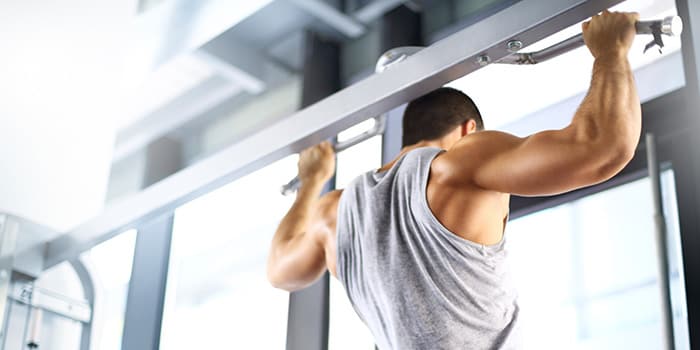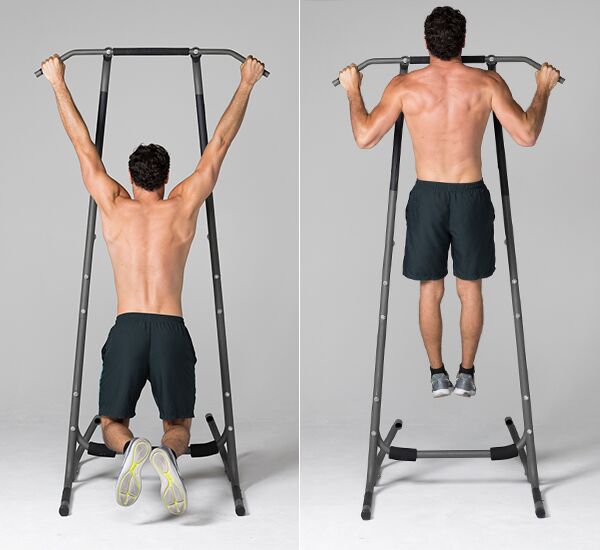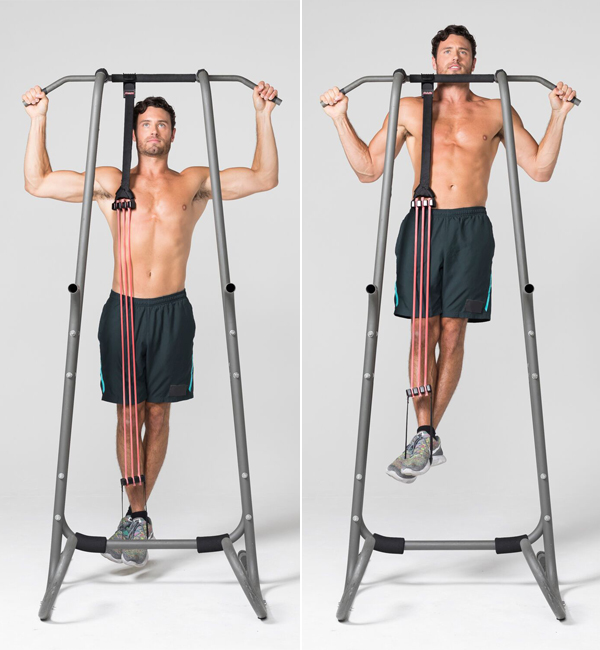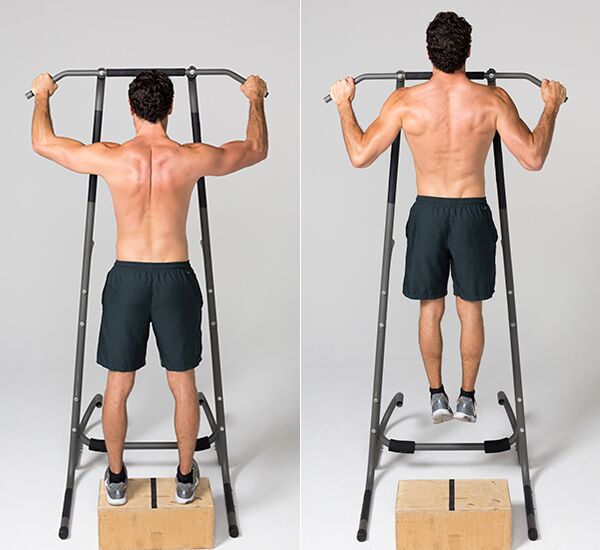4 Awesome Benefits of Pull-Ups

A pull-up is a “compound exercise” that involves a large number of big and small muscles, most notably your latissimus dorsi (lats) and biceps.
In addition to working multiple muscles at the same time, the pull-up is also a multi-joint movement, an exercise that causes more than one joint to move.
During a pull-up, your wrists, elbows, and shoulder angles all change.
4 Reasons to Work Pull-Ups Into Your Routine

You may dread them, but pull-ups are great at helping your arms, back, and core look fantastic.
Check out these benefits of pull-ups and how you can get better at doing them.
1. Functional strength
As humans, we perform a wide range of movements on a daily basis, including standing, walking, pushing, pulling, twisting, turning, etc.
By improving your functional strength through dynamic compound exercises like pull-ups, you strengthen the relationship between your nervous and muscular systems.
2. Better posture
As you strengthen your back and core muscles, you can achieve better posture. When your posture improves, you appear longer and leaner.
3. Reduced back pain
A lot of people sit on the drive to work, sit in front of a computer all day, and then sit driving home. You might even sit on the couch once you’re home. All of this cumulative sitting increases the physiological load on your back. By strengthening your back and core muscles with the pull-up, you reduce your chances of future back pain and injury.
4. Improved physique
Want to look great in that tank top? Pull-ups help define your back and biceps and work your core. All of this makes your waist look smaller. For guys, it can also help create the “V” shape.
How Do You Do a Pull-Up?
Program: TOUGH MUDDER T-MINUS 30
Workout: Pull-Up Training
You should use a pronated (overhand) grip. (An underhand grip = supinated = chin-up).
The first part of the movement calls for scapular retraction. This is a fancy term for what it means to draw your shoulder blades together and down.
To do this, imagine someone’s hand in the middle of your back. Try to pinch that hand with your shoulder blades.
You can practice this while standing freely or by hanging from your pull-up bar and bringing those shoulder blades in.
This movement engages your lats, the large set of muscles in your back, that are critical supporting muscles.
After you retract your scapulas, you want to pull your body upward toward the bar. This requires flexion of the elbow joint, or the bending of your arms.
In order to flex the elbow joint, the biceps and supporting arm and back muscles are called into action.
Finally, you need to lower yourself back to where you began. For this, your triceps and shoulders kick into gear.
And let’s not forget the grip strength needed just to hold onto the bar.
What If I Can’t Do a Pull-Up?

There are modifications that you can use to pull yourself up to that bar. A great way to modify the pull-up is by using an aid like an assist loop.
Look for one with adjustable resistance levels, so the stronger you get, the less assistance you’ll need.

You can also use a chair to assist you. Simply place the chair underneath the pull-up bar and place your foot (or both feet to make it easier) on the chair.
By applying weight to the chair, you’re relieving some resistance to complete the pull-up.
Check out even more exercises that can help you get better at pull-ups.
